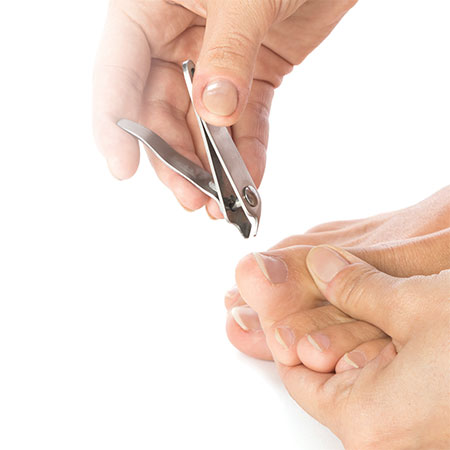Ingrown nails are a common problem which, without adequate care, can worsen. Find out how to avoid their unpleasant effects.
What is an ingrown nail?
An ingrown nail is when part of the nail penetrates the flesh surrounding the toenail. This most often happens to the big toe.
One of the main inconveniences of an ingrown nail is its unsightly appearance. Additionally, it is often accompanied by pain, redness, and swelling at the wound site.
If no action is taken, an ingrown nail can progressively dig into the nail bed and symptoms can worsen. The presence of this "foreign object" can also cause the most common complication: infection.
How can an ingrown nail be prevented?
Some factors predispose a person to having an ingrown nail, for instance:
- wearing shoes that are too narrow, especially around the toes
- cutting nails too short or with rounded edges (it is better to cut them straight)
- experiencing trauma to a toe
- having an infection to the feet, most often a fungal infection (caused by a fungus), and
- having a hereditary predisposition to ingrown nails
If you notice that the edge of a nail is becoming ingrown, you can try the following measures:
- Place a piece of a cotton ball or dental floss under the nail at the contact site with the skin to reduce the pressure.
- Soak the foot in warm soapy water for 10 to 20 minutes, two to three times a day for a week or two. You can use one or two teaspoons of Epsom salts (available at the pharmacy) instead of soap.
- See a pedicurist who will try to remove the edge of the nail or to cut or file the nail to rectify the situation.
When should you seek medical attention?
It is recommended to see a doctor or podiatrist (footcare medical professional) in the following situations:
- if symptoms seem to worsen instead of improving after having administered care
- if you notice a lot of redness or swelling
- if you notice the presence of pus, and
- if a strong odour emanates from the wound
How is an ingrown nail treated?
If you have an ingrown nail, the following measures are strongly suggested:
- Apply a sterile compress soaked in an antiseptic solution (your pharmacist can recommend one) and gently clean the wound twice or three times daily.
- Apply a topical antibiotic (cream or ointment) to the wound to prevent infection. Your pharmacist can recommend a product and inform you on how to use it.
Treatment methods for ingrown nails depend on the problem's severity. If there is no infection, a pedicure may be enough.
In some cases, other interventions (surgical or non surgical) will have to be undertaken by a doctor or podiatrist.
An antibiotic treatment will be necessary if infection sets in. It may consist of a local or oral treatment and must be prescribed to you. For optimal results, it is advisable to closely follow your doctor’s or podiatrist’s recommendations, and your pharmacist’s as well.
Remember that your pharmacist is always there to help you and to answer your questions concerning any health issues!

